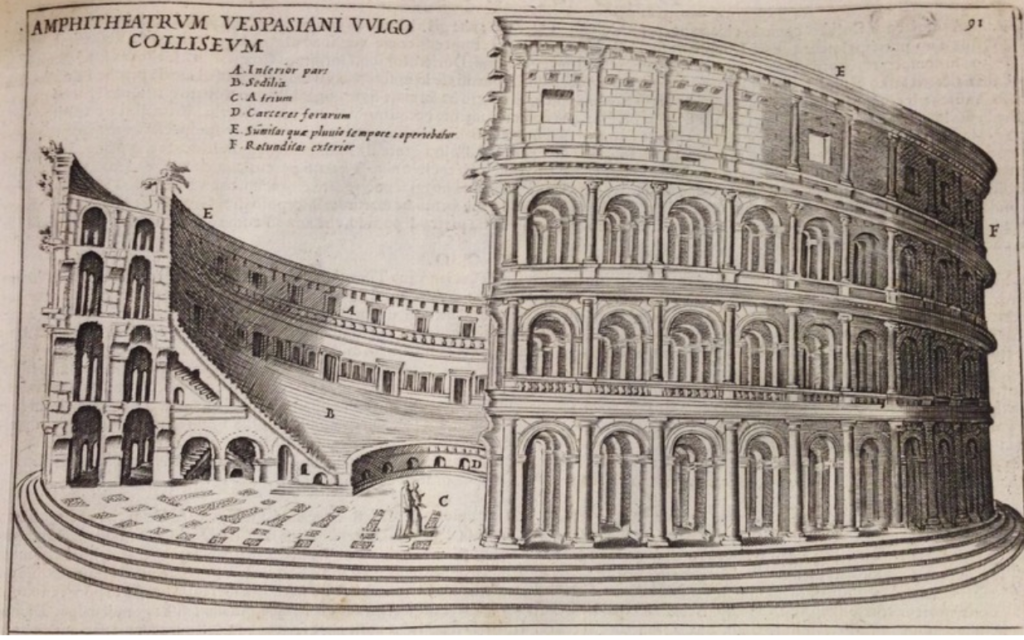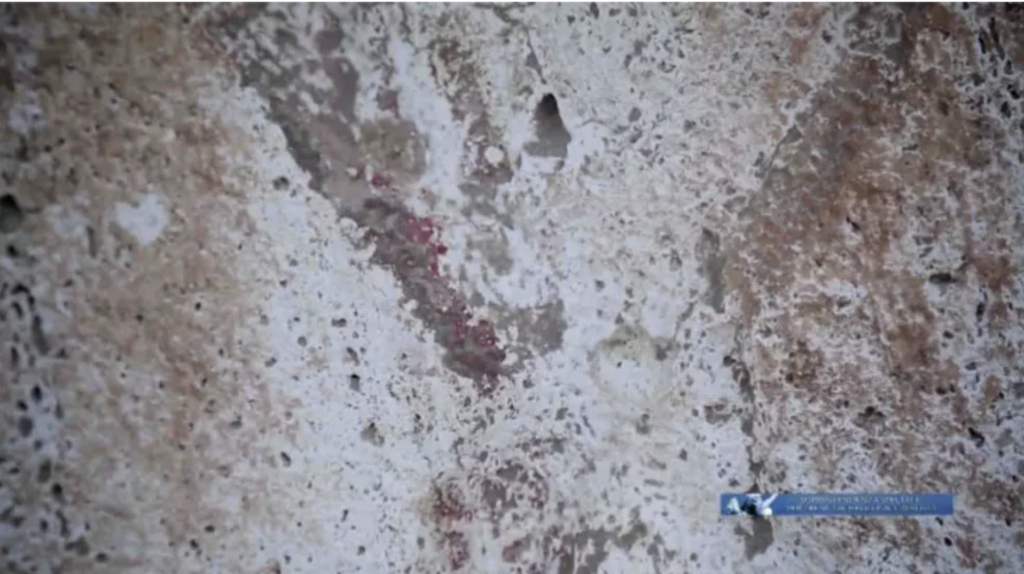The Colosseum, in Rome, was an engineering feat and a place for gladiator matches, but it existed as a physical representation of class stratification too. In an attempt to symbolize their triumph in subjugating Jerusalem during the First Jewish Roman War, Vespasian, the Roman emperor, ordered the construction of the Colosseum, also known as the Flavian Amphitheater (Evans 2022). Given the history of Rome’s warfare tactics, including enslavement, it was likely that the construction was done by Jewish slaves, or women (in Greco-Roman culture, believed to be inherently subordinate).

As a prominent aspect of daily life in Rome, the Colosseum was enjoyed by many, but it was a constant reminder of the inequality among Romans, ordered by the political and social elite. In 2015, archaeologists discovered traces of red paint on the seats and archways at the Colosseum depicting numbers, about 13 inches tall. It was said to specify seating assignments based on class (Clark 2015). This paint, consisting of iron oxide and clay, was likely preserved by a layer of dirt, serving as protection from harsh weather and outside meddling (Clark 2015). We know, from this labeling, that the section nearest to the arena was reserved for the emperor and senatorial elite; above them were former cavalry members, artisans, and bureaucrats. In the two upper most tiers of the Colosseum sat the “women, foreigners…poor and enslaved Romans” (Evans 2022). However, appeals of the Colosseum were its elliptical shape (giving everyone a virtually equal view) (“Colosseum Architecture” n.d.), free entry (Clark 2015), free snacks (Kuo 2004), and large accommodations, such as two vast restrooms (“Colosseum Architecture” n.d.).

More recently a group of archaeologists, led by Federica Rinaldi, used wire-guided robots to explore the 230 feet of sewage beneath this structure . The findings of this analysis included “traces of olives, nuts, meats, cherries, grapes, figs, blackberries and peaches from 1,900 years ago” (Enking 2022). It was not mentioned explicitly what the word “traces” indicated. One could hypothesize that the word suggests excretions drained from the two large restrooms, or different parts of the food (pits, seeds, etc.). As these, now free, foods were frequently enjoyed by the rich and desired by the poor, they give us insight into more possible motives for the upper and lower class to be equally drawn to the Colosseum. It is plausible that these traces of food, in its pure form or in excrements, were preserved through the large fire that occurred in 217 CE (Mueller 2011). Burning is often a form of preservation of vegetation and other natural resources.
We believe, today, that all great discoveries have been made, but those recently discovered at the Colosseum are colossal. We understand better the motivations for attending the arena, outside of its entertainment, and the extent to which the rigid Roman social hierarchy infiltrated all aspects of life. The extent to which these traces of natural products were preserved and pursued in the Colosseum sewage system continues to lend to the engineering prowess of Rome at this time. The earth is laden with history, and with proper research, some of it waits to be discovered.
Further Reading
Cascone, Sarah, and Eileen Kinsella. 2021. “Engineers Will Reconstruct the Colosseum’s Arena Floor, Allowing Visitors to Stand Where Gladiators Once Fought.” Artnet News. https://news.artnet.com/art-world/gladiators-view-colosseum-rome-1963926.
Siwicki, Christopher. 2023. “New Excavations at Rome’s Colosseum.” Art & Object. https://www.artandobject.com/news/new-excavations-romes-colosseum.
References
“Architecture · Colosseum · Piranesi in Rome.” n.d. Omeka.Wellesley. Accessed September 24, 2023.
http://omeka.wellesley.edu/piranesi-rome/exhibits/show/colosseum/architecture.
Clark, Laura. 2015. “Evidence of a Seating Plan Discovered at the Colosseum.” Smithsonian Magazine.
“Colosseum Architecture | How Colosseum was built | Colosseum Building.” n.d. Rome Colosseum Tickets Tours.
https://romecolosseumtickets.tours/colosseum-arhitecture-rome/.
Enking, Molly. 2022. “Archaeologists Find 1900-Year-Old Snacks in Sewers Beneath the Colosseum.” Smithsonian Magazine. https://www.smithsonianmag.com/smart-news/ancient-roman-spectator-snacks-dog-bones-discovered-in-colosseum-dig-180981211/.
Evans, Farrell. 2022. “How the Colosseum Was Built—and Why It Was an Architectural Marvel.” History. https://www.history.com/news/how-roman-colosseum-built.
Kuo, James. 2004. “The Colosseum: Power, Brilliance, and Brutality.” University of Washington Honors Program. https://depts.washington.edu/hrome/Authors/jimkuo2/IlColosseo/pub_zbarticle_view_printable.html.
Mueller, Tom. 2011. “Secrets of the Colosseum | History.” Smithsonian Magazine. https://www.smithsonianmag.com/history/secrets-of-the-colosseum-75827047/.
Russon, Mary. 2015. “Rome: Colosseum’s ‘ancient seating plan’ revealed.” IBTimes UK. https://www.ibtimes.co.uk/rome-painted-red-numbers-discovered-colosseums-walls-reveal-ancient-seating-plan-1484900.

Why are seating assignments crucial to understanding the social hierarchy of Rome back then, and what does it say about the entertainment discourse of modern times? How would you compare and contrast the seating assignments we utilize today (say, I go to Beyoncé’s Renaissance World Tour and end up in a seat really, really far away from the stage) with those discovered in the Colosseum? How do they (if they do at all) differ and overlap with each other in terms of social hierarchy and systemic violence?
Rome’s class system was hereditary. Entertainment was aimed at those not reliant on daily work for income (seemingly, they should prioritize income over leisure). Similarly today, we see exorbitantly high prices for floor seating implying that higher classes are more deserving of experiencing extraordinary entertainment and lower classes are not.